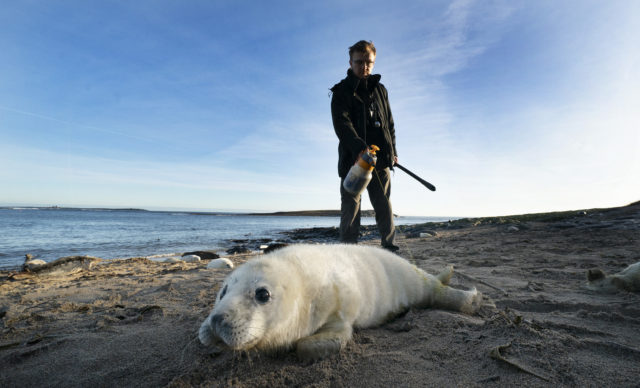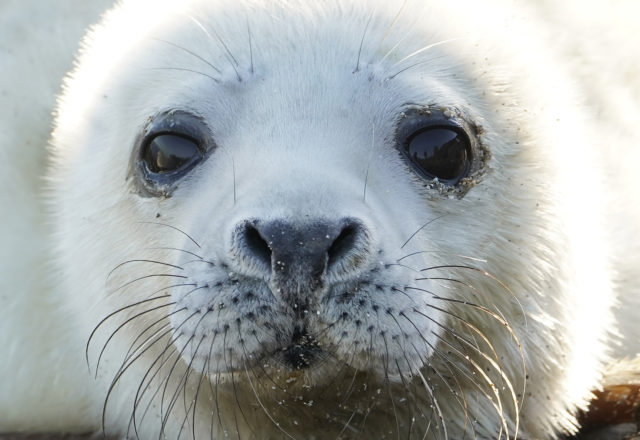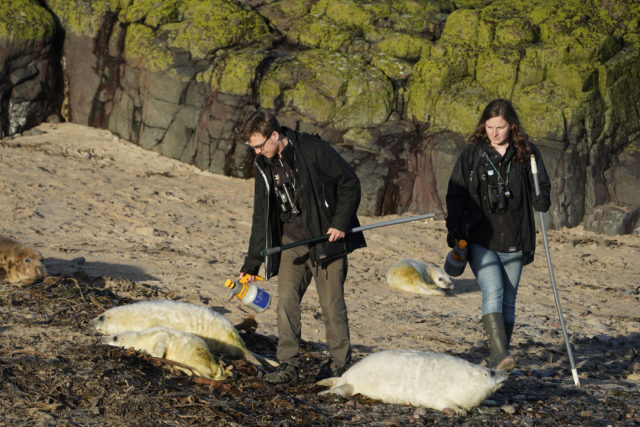
Atlantic grey seal pup numbers at one of the largest colonies in England have reached record highs, the National Trust has said.
Counts by rangers on the Farne Islands, off the coast of Northumberland, have revealed numbers of youngsters born at the colony has risen by almost 50% over five years.
Some 2,602 pups have been counted this breeding season on the islands, up from 1,740 in 2014, with the healthy numbers thought to be down to a good supply of food for the seals and a lack of predators.
Seal pup numbers also hit record highs at the National Trust’s Blakeney Point in Norfolk, with 2,802 youngsters counted this year, compared to 2,000 in 2014.
Grey seals are protected mammals, with global numbers thought to be around 300,000, half of which live in British and Irish waters.

National Trust rangers who live on the Farne Islands for nine months a year survey the seals during the breeding season, which runs from late September to December with the majority of pups born in October and November.
Once the breeding season starts, pups are sprayed with a harmless vegetable dye to indicated the week they were born, with a rotation of three or four colours helping rangers keep track of numbers.
And for the first time, following a trial last year, rangers have also used a drone flying overhead as they undertake the spraying, to check against numbers gained on the ground, to make the count more accurate and less stressful for the seals.

The drone has also allowed the rangers to see onto the smaller islands which are hard to land on in rough seas, the Trust said.
Ranger Thomas Hendry said: “We wait until the first pups are born and then begin the process of counting and marking all the pups born on the islands.
“A lack of predators and a plentiful supply of sand eels, which make up about 70% of the seals’ diet, has helped bolster our seal pup numbers.

“This new record for the grey seal colony is certainly a milestone and could be good news for the health of our seas around the islands, indicating a good food supply due to fishing being limited partly due to several protected areas of sea around the islands.
“Over the next few years we will monitor the effect of a growing seal population and to manage the island habitats accordingly.”
As well as seeing a rise in numbers, the rangers on the Farne Islands say they have also seen changes to the breeding sites.
While more pups used to be born on the islands of North and South Wamses, now many seals try to breed on Brownsman and Staple islands, which are bigger and have higher ground, providing better protection from storms and high seas.


Comments: Our rules
We want our comments to be a lively and valuable part of our community - a place where readers can debate and engage with the most important local issues. The ability to comment on our stories is a privilege, not a right, however, and that privilege may be withdrawn if it is abused or misused.
Please report any comments that break our rules.
Read the rules hereLast Updated:
Report this comment Cancel